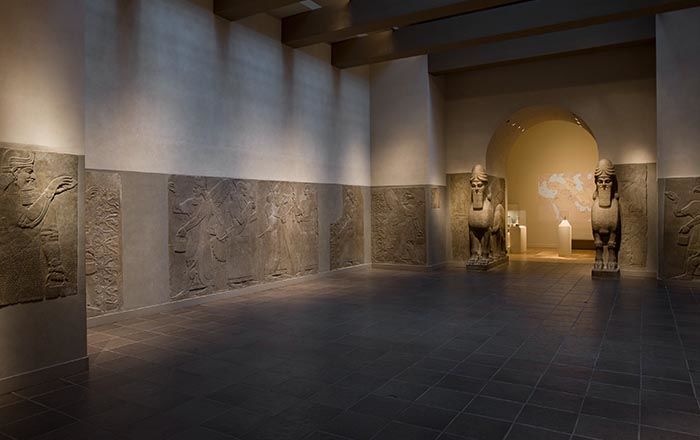Two-handled jar
Not on view
This jar has a globular body that tapers to a flat base, a wide mouth and two loop handles (both modern restorations) connected to the shoulder and the rim. It is made of a pinkish buff clay, with darker red coloring near the base, using a potter’s wheel. It was excavated at Tepe Nush-i Jan, an Iron Age hilltop site about 60 km sound of Hamadan in western Iran. Nush-i Jan was occupied in the 7th and 6th centuries B.C., and its occupants are generally thought to be the Medes, an Iranian people known from Assyrian, Achaemenid and Biblical sources. Though the textual sources portray them as a powerful empire, archaeological evidence for the Medes has yet to sustain this impression. Rather, they seem to have lived in scattered fortified sites in western and central Iran, without any clear capital. Nush-i Jan, one of the best known of these sites, features two temples, a columned hall, and a fort. The jar was found in the fill of an arrow slot in the fort, suggesting it was deposited there around the time of the fort’s abandonment.
This image cannot be enlarged, viewed at full screen, or downloaded.

